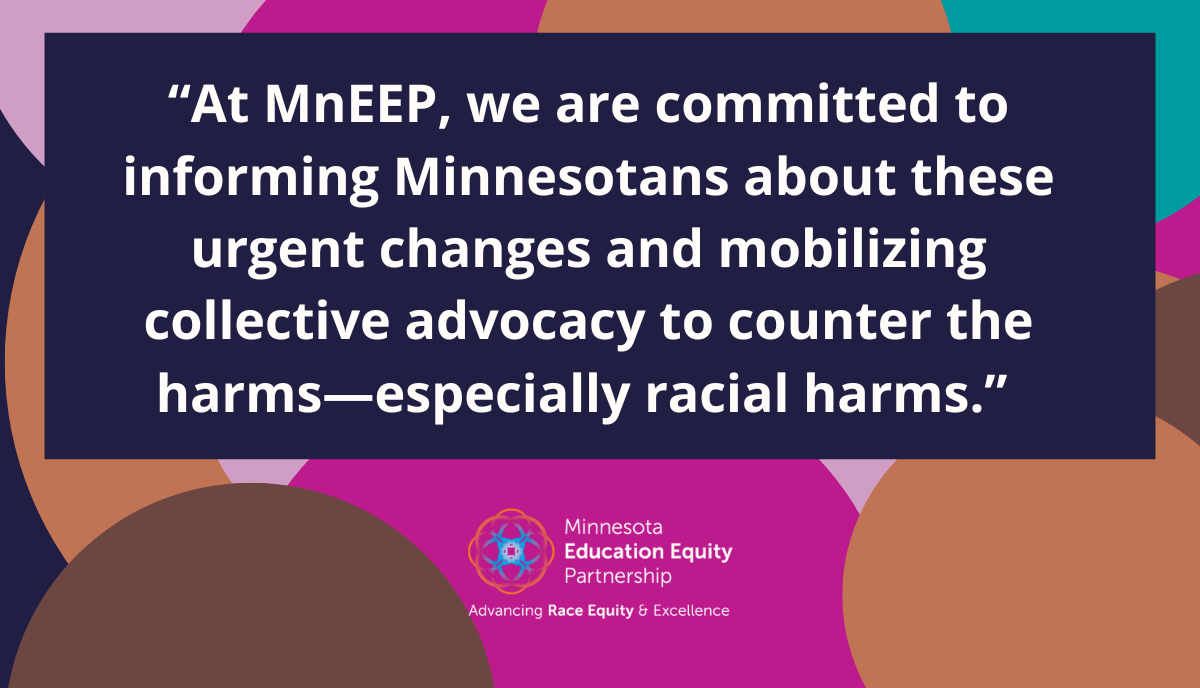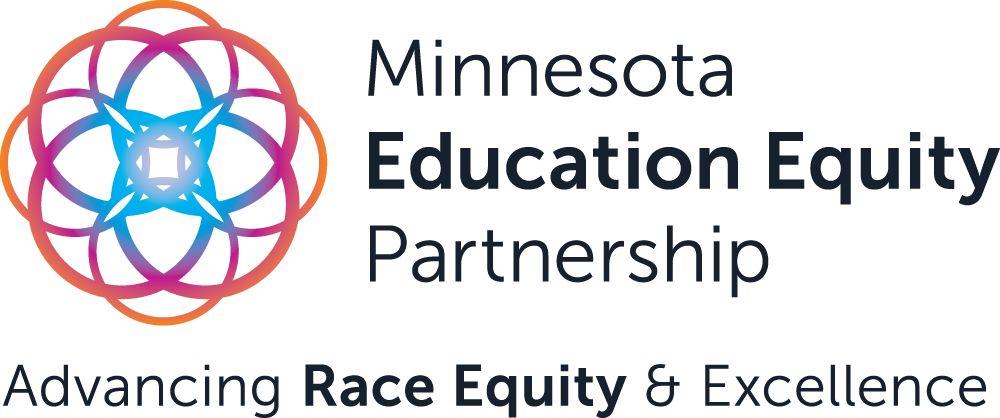
Federal Funding Freeze Threatens Minnesota Students and Racial Equity Progress
By MnEEP Executive Director Carlos Mariani Rosa
MnEEP is deeply concerned by the latest decision from the current White House administration to unilaterally withhold more than $66 million in federal education funding from Minnesota. These funds were originally scheduled for release on July 1, yet schools and community programs were notified of the freeze just one day prior, on June 30, leaving them in an urgent state of limbo.
The areas impacted are critical to student learning and well-being, especially for low-income students and students of Color or Indigenous students (POCI):
-
$26.5 million for teacher professional development and class size reduction
-
$13.8 million for STEM education and academic enrichment grants
-
$11.1 million for English Language Learner programs
-
$2 million for students from migrant worker families
-
$13.2 million for afterschool programming
The administration’s stated reason for “impounding” these funds is to determine whether the programs align with the President’s priorities. Yet these are long-standing programs that directly benefit students who are most in need. This decision deeply disrupts organizations like the Boys and Girls Club and others that rely on consistent support.
Last-minute decisions of this magnitude are extremely unfair — not only to the schools and educators working tirelessly to support students, but especially to the students themselves. This action stands to significantly undermine Minnesota’s efforts to close racial opportunity gaps, which remain among the most severe in the nation.
At MnEEP, we are committed to informing Minnesotans about these urgent changes and mobilizing collective advocacy to counter the harms—especially racial harms.
We encourage parents, students, and community members to contact school leaders and express their support for equitable strategies to manage these funding cuts. Ask how you can advocate for the fiscal integrity of your schools.
We are also co-convening a diverse coalition of education-focused nonprofits to build a strong, united voice against harmful federal decisions, and to develop new state-level policy solutions that can offer stability and equity-focused alternatives.
Stay tuned. MnEEP will soon launch a Toolkit that provides real-time updates on federal actions, highlights policies that promote racial equity in education, and shares ways you can engage in policy design and advocacy.
Sadly, this federal administration is actively undermining racial justice and equity, eroding effective educational practices that have demonstrated success across race and culture, while continuing to underfund our schools and colleges.
These attacks threaten the very foundation of inclusive, high-quality education. But we do not have to stand by. Together, we can hold the line against these attacks and build better education policies and practices that empower every student, especially our POCI students, to thrive.
